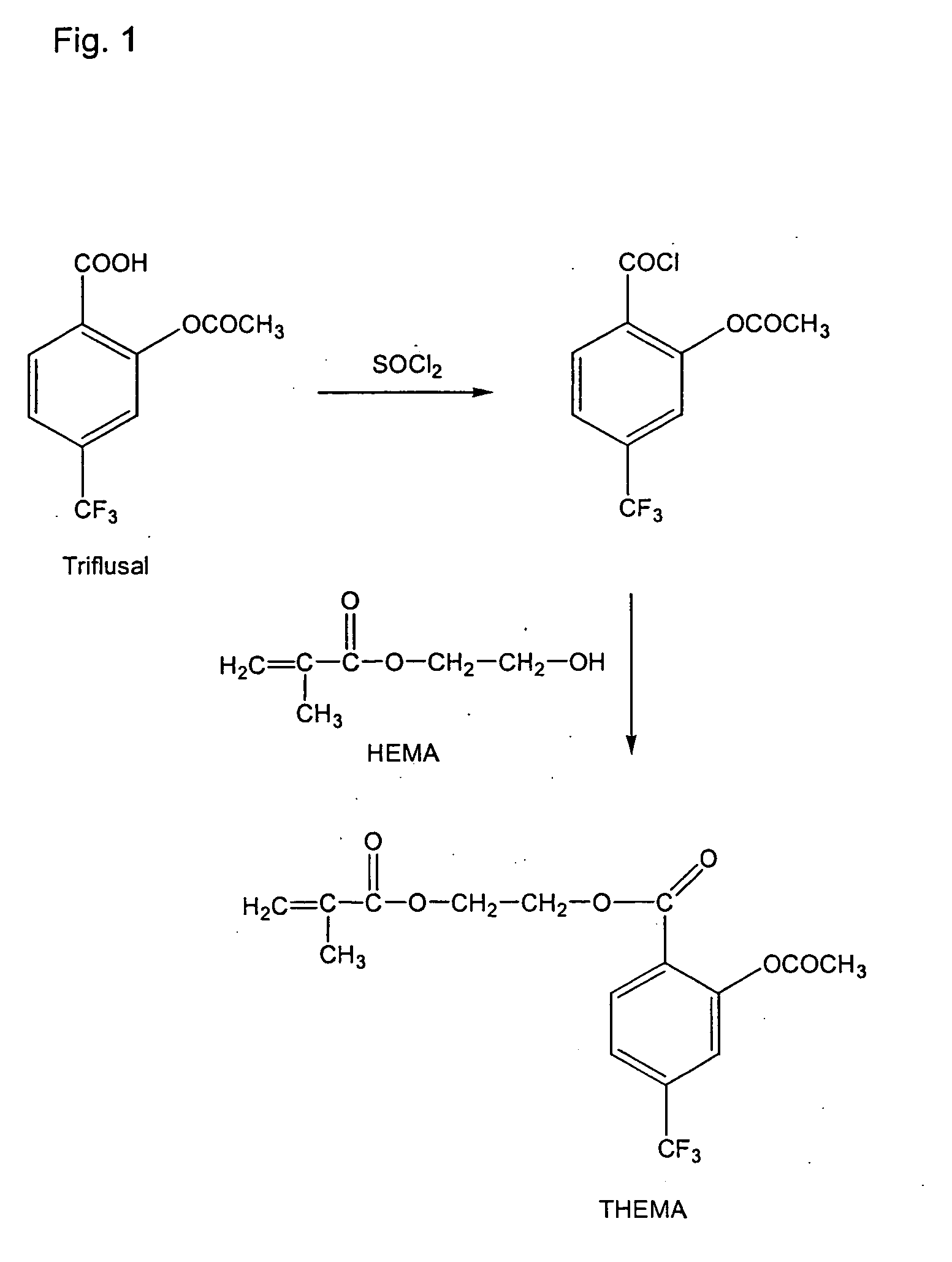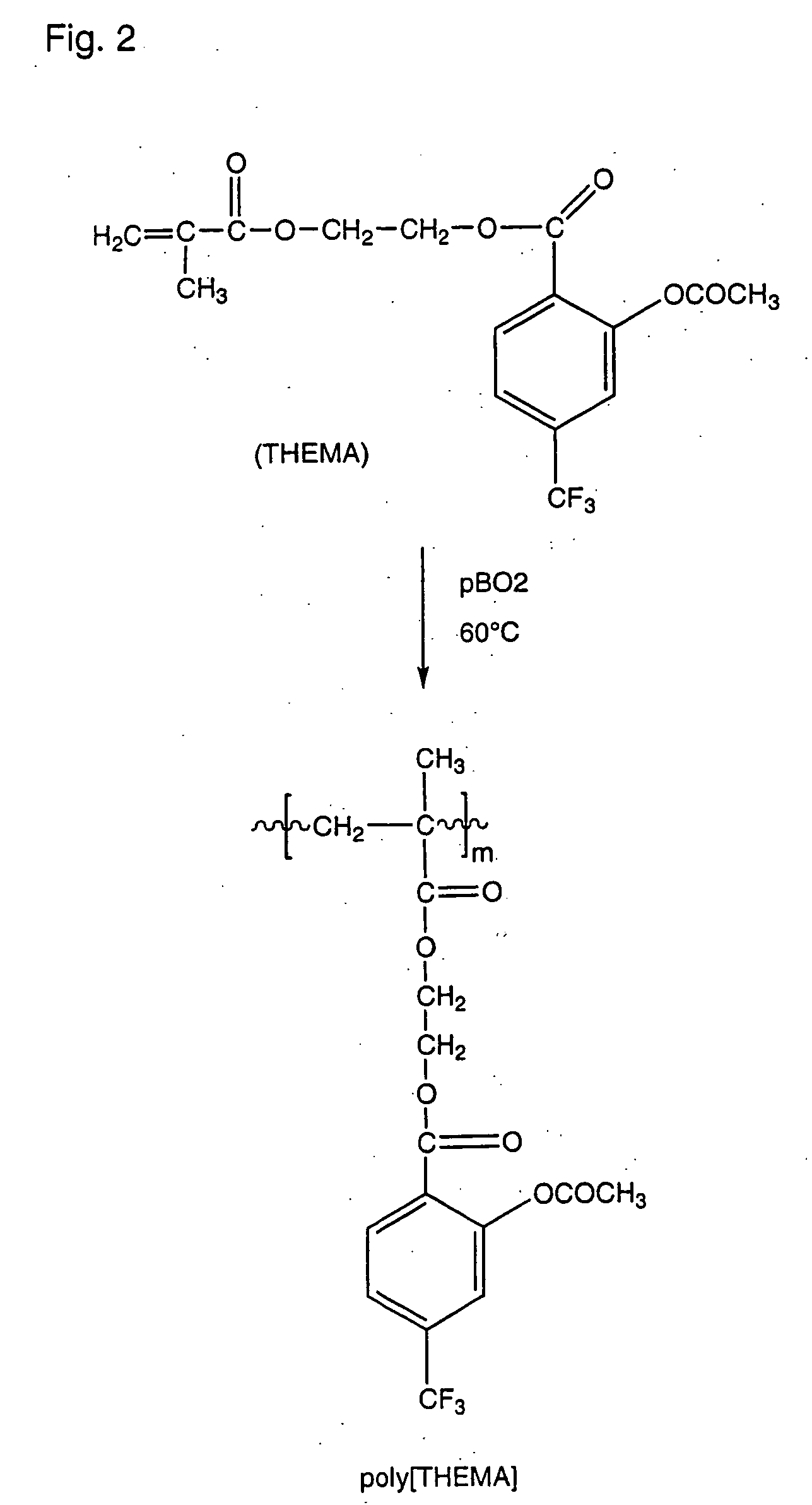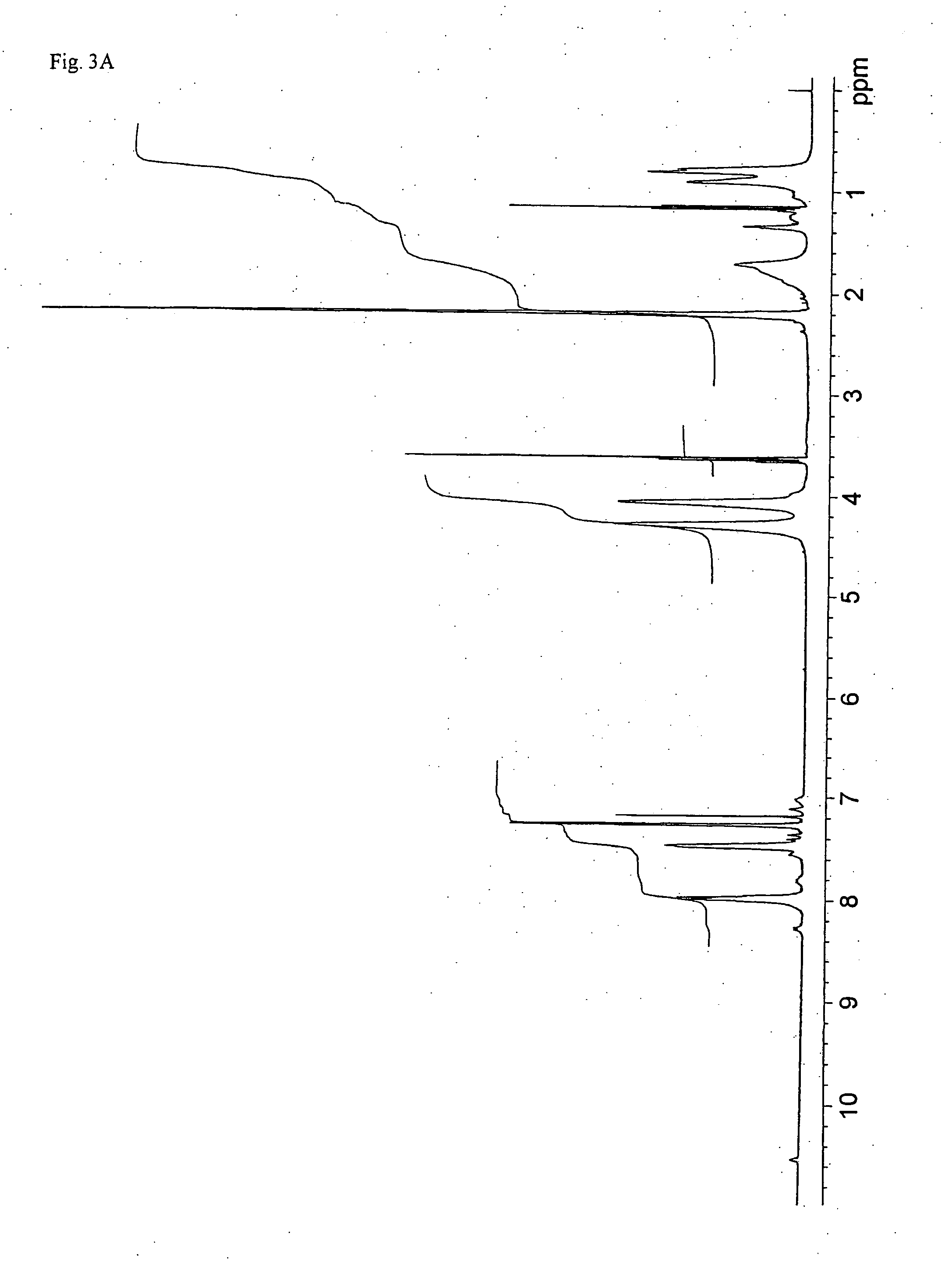Biocompatible polymeric systems carrying triflusal or HTB
a polymer, triflusal technology, applied in the direction of pharmaceutical containers, packaged goods, foodstuffs, etc., can solve the problem of high failure rate at short- or mid-term
- Summary
- Abstract
- Description
- Claims
- Application Information
AI Technical Summary
Benefits of technology
Problems solved by technology
Method used
Image
Examples
example 1
Preparation of 2-(methacryloyloxy)ethyl 2-acetyloxy-4-(trifluoromethyl)benzoate (THEMA)
[0065] The preparation of this compound is shown in the scheme of FIG. 1.
a) 2-Acetyloxy-4-(trifluoromethyl)benzoic acid chloride
[0066] In a round-bottomed flask 0.1 mols of triflusal were reacted with 70 mL of SOCl2, the flask was connected to a refrigerant and the reaction was heated at reflux for 4 h, under magnetic stirring. Next, the unreacted SOCl2 excess was removed by distillation, first at atmospheric pressure and then at reduced pressure. Then, the desired acid chloride was isolated by distillation at reduced pressure. The yield of the reaction was 64%.
[0067]1H-NMR (DMSO-d6, 300 MHz, 20° C.); δ: 8.1 (d, 1H, arom), 7.7 (d, 1H, arom), 7.6 (s, 1H, arom), 2.3 (s, 3H, CH3COO—).
b) 2-(Methacryloyloxy)ethyl 2-acetyloxy-4-(trifluoromethyl)benzoate (TH EMA)
[0068] In a flask were mixed 0.025 mols of 2-hydroxyethyl methacrylate (HEMA) and 5.21 mL Et3N (0.025 mols) in 100 mL of diethylether as s...
example 2
Preparation of poly[2-(methacryloyloxy)ethyl 2-acetyloxy-4-(trifluoromethyl)benzoate](poly[THEMA])
[0070] This compound was prepared by polymerization of the monomer carrying triflusal obtained in example 1 (THEMA). The chemical structure of this compound and its synthesis are shown in the scheme of FIG. 2.
[0071] In Pyrex glass ampoules, 5 g of THEMA (obtained in example 1) was dissolved in 28 mL of a (4:1) purified dioxane / acetone mixture, the concentration of the solution thus being 0.5M. Next, benzoyl peroxide (1.5×10−2 M) was added as the initiator; for the solution described above 100.8 mg were used. Oxygen was then removed from the solution by bubbling nitrogen (30 min) twice.
[0072] The sealed ampoules were immersed in a thermostatic bath at 60° C. for 24 h. After polymerization, the polymer was precipitated by pouring it into an excess of ethanol; to precipitate 5 g of polymer 500 mL of ethanol was used, to which the polymer solution was added dropwise. This operation was c...
example 3
Preparation of copolymers from THEMA and N,N-dimethylacrvlamide (DMA) having various m / n molar fractions (poly[THEMA-co-DMA])
[0075] The chemical structure of these copolymers and their synthesis are shown in the scheme of FIG. 4.
[0076] The preparation of a representative THEMA-DMA copolymer is carried out as follows:
[0077] 1 g of THEMA (obtained in example 1) and 1 g of DMA was dissolved in 25.75 mL of purified dioxane, the final concentration of the solution being 0.5 M. Next, 46.75 mg of benzoyl peroxide at a concentration of 1.5×10−2 M was added and oxygen was removed from the solution by bubbling nitrogen twice for 30 minutes.
[0078] The sealed ampoule was immersed in a thermostatic bath at 60° C. for 24 h. The polymer was then precipitated by pouring the resulting solution dropwise into 1 L of diethyl ether. The solution was kept under stirring for 4 h, diethyl ether was then removed by decantation and the precipitate was dried under vacuum until constant weight. The yield o...
PUM
| Property | Measurement | Unit |
|---|---|---|
| diameter | aaaaa | aaaaa |
| molecular weight | aaaaa | aaaaa |
| molecular weight | aaaaa | aaaaa |
Abstract
Description
Claims
Application Information
 Login to View More
Login to View More - R&D
- Intellectual Property
- Life Sciences
- Materials
- Tech Scout
- Unparalleled Data Quality
- Higher Quality Content
- 60% Fewer Hallucinations
Browse by: Latest US Patents, China's latest patents, Technical Efficacy Thesaurus, Application Domain, Technology Topic, Popular Technical Reports.
© 2025 PatSnap. All rights reserved.Legal|Privacy policy|Modern Slavery Act Transparency Statement|Sitemap|About US| Contact US: help@patsnap.com



